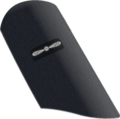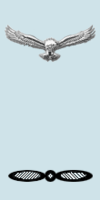Leading aircraftman


Leading aircraftman (LAC) or leading aircraftwoman (LACW)[1][2] is a junior rank in some air forces, between aircraftman and senior aircraftman and having a NATO rank code of OR-2. The rank badge is a horizontal two-bladed propeller.
The rank originated in the Royal Air Force, when it was formed in 1918. It replaced the Royal Flying Corps rank of air mechanic 1st class (which wore the same badge). It was only a trade classification until 1 January 1951, when it became a rank, although it is non-supervisory.
Leading aircraftman is also a rank in the Royal Australian Air Force (which uses a single chevron rather than a propeller device), Royal New Zealand Air Force, Indian Air Force, Ghana Air Force and the Sri Lanka Air Force, and until 1968 was a rank in the Royal Canadian Air Force.
Leading air cadet (LAC) in the New Zealand Air Training Corps also uses the propeller badge. It is not technically a rank (although many units regard it as a very junior NCO rank), and may be awarded to cadets who have attended a minimum of thirty parades, or completed one year in a unit. The rank is generally awarded to those cadets who show obvious leadership skill.
Footnotes
- ↑ RAF website
- ↑ The spellings "aircraftsman" and "aircraftswoman", despite being occasionally seen even in official documents, are incorrect in any air force.